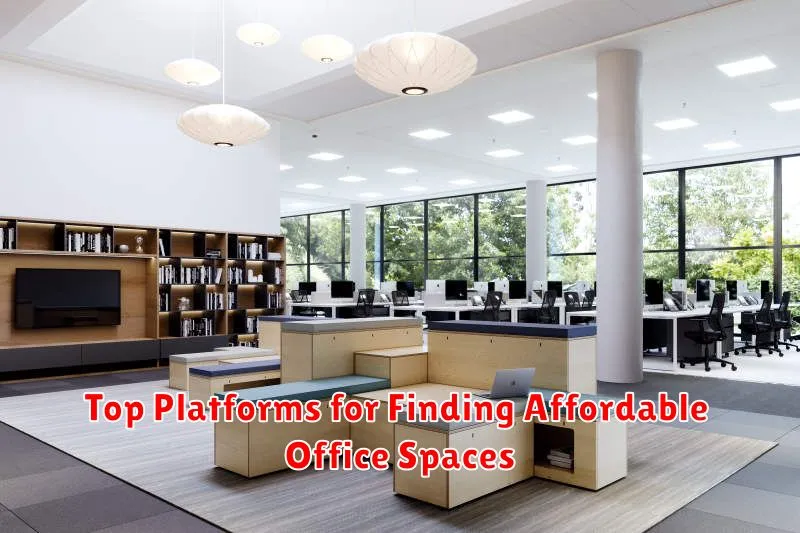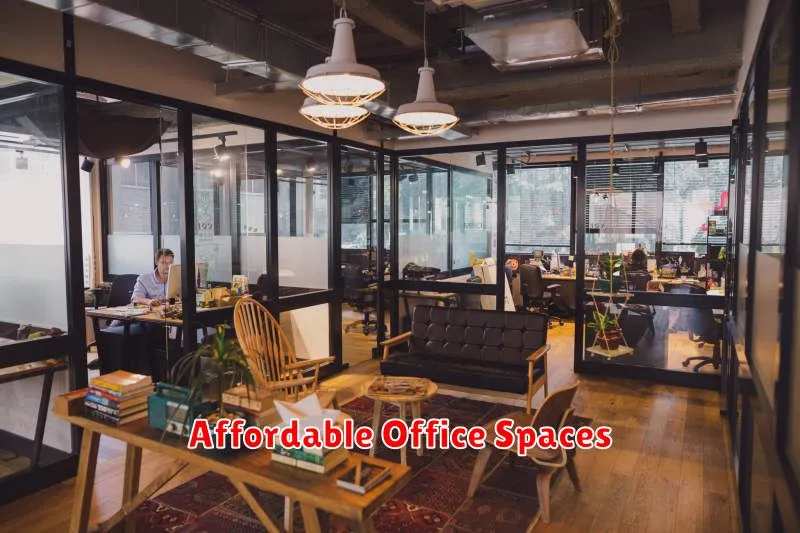Finding affordable office rentals in a big city can feel like searching for a needle in a haystack. High demand and limited space often lead to exorbitant prices. But don’t despair! This guide will equip you with the essential strategies and insider tips to successfully navigate the competitive market and secure cheap office space in major metropolitan areas. We’ll explore various options, from shared workspaces and virtual offices to negotiating leases and leveraging technology to find the perfect affordable office rental that meets your budget and business needs. Get ready to unlock the secrets to finding cheap office space in your dream city!
Why Big Cities Are Challenging for Office Rentals
Finding affordable office rentals in big cities presents a unique set of challenges. High demand is a primary factor, with numerous businesses competing for limited spaces in desirable locations. This intense competition drives prices significantly higher than in suburban or rural areas.
Location, location, location is the mantra of real estate, and prime spots in bustling city centers command top dollar. Proximity to public transportation, amenities, and other businesses increases desirability, further escalating rental costs.
Building costs and property taxes are generally much higher in densely populated urban areas. Land is expensive, construction is complex, and maintaining older buildings requires substantial investment. These costs are inevitably passed onto tenants in the form of higher rents.
Finally, the sheer volume of businesses operating in major cities contributes to the competitive rental market. Many companies seek modern, well-equipped spaces, further reducing the availability of affordable options.
Top Platforms for Finding Affordable Office Spaces

Finding affordable office space in a big city can feel like a daunting task, but several online platforms make the search significantly easier. These platforms offer a centralized hub for listings, allowing you to filter by price, location, and amenities. This saves you considerable time and effort compared to scouring individual listings.
CommercialCafe is a popular choice, known for its extensive database of commercial real estate listings, including offices of all sizes. Spacelist focuses specifically on flexible and shared workspaces, a great option for startups or smaller businesses needing a cost-effective solution. OfficeSpace.com provides a broad selection, often including details on lease terms and building amenities. LoopNet is another strong contender, offering a large inventory and sophisticated search filters.
Beyond these major players, consider exploring local real estate websites and brokers. They often have access to off-market listings and can provide valuable insights into the local market. Remember to carefully compare listings across multiple platforms to ensure you find the best deal. Don’t forget to factor in additional costs like utilities and maintenance fees when calculating your total monthly expenditure.
Utilizing these platforms effectively will dramatically improve your chances of securing affordable office space in a competitive market. Remember to thoroughly research each listing and carefully review the lease agreement before committing to a space.
Key Factors to Consider in Office Rentals
Finding affordable office rentals in big cities requires careful consideration of several key factors. Location is paramount; while central locations offer prestige, they often command higher rents. Consider areas slightly outside the core business district to potentially save money, but weigh this against commute times and accessibility for clients and employees.
Size is another crucial factor. Rent per square foot typically decreases with larger spaces, but renting more space than needed is wasteful. Accurately assess your current and future space needs to avoid overspending. Consider whether you need private offices, open plan layouts, or a combination of both.
Lease terms vary significantly impacting your overall cost. Longer-term leases often provide lower monthly rates but lock you in for an extended period. Shorter-term leases offer flexibility but usually come with a higher price per month. Carefully evaluate your business needs and risk tolerance when deciding on the lease length.
Amenities significantly influence rental costs. Features like furnished offices, high-speed internet, meeting rooms, and parking add to the monthly expense. Prioritize the amenities essential for your business operations to avoid unnecessary costs.
Finally, always factor in hidden costs. These can include utilities (electricity, water, gas), property taxes, insurance, and cleaning services. Thoroughly review the lease agreement to understand all associated charges before committing to a rental space.
How to Negotiate Lower Rental Rates
Negotiating lower rental rates in big cities requires preparation and confidence. Before approaching the landlord, thoroughly research comparable office spaces in the area. This gives you leverage to demonstrate that the asking price is above market value.
Timing is key. Negotiating at the end of a lease term or during periods of low occupancy often yields better results. Landlords are more willing to compromise to avoid vacancy.
Present a strong case. Highlight your company’s stability and long-term commitment. A longer lease term is a valuable asset to a landlord, making you a more desirable tenant. Be prepared to offer a longer lease in exchange for a lower rate.
Don’t be afraid to walk away. Having alternative options demonstrates your seriousness and strength in the negotiation. If the landlord isn’t willing to budge to a reasonable price, explore other properties.
Be polite and professional. Maintain a respectful demeanor throughout the negotiation process. Even if you don’t get the exact rate you want, a positive relationship could benefit you in the long run. Remember, it’s a negotiation, not a battle.
Consider concessions. If a direct rate reduction isn’t possible, explore alternative options like rent-free months or contributions towards tenant improvements. These can effectively lower your overall cost.
Tips for Managing Shared Office Spaces
Sharing an office space can be a cost-effective solution, but it requires careful management. Establish clear communication channels from the start. This could involve a shared communication platform like Slack or regular team meetings to address concerns and coordinate schedules.
Respect for shared resources is paramount. Create a system for booking meeting rooms or shared equipment to avoid conflicts and ensure fair access. Develop a cleaning schedule and designate responsibilities to maintain a tidy and professional workspace.
Set boundaries regarding noise levels and personal space. Be mindful of colleagues and avoid disruptive behavior. Consider establishing guidelines for visitors and guests to maintain a productive environment.
Establish clear expectations regarding shared expenses, such as utilities or internet costs. Ensure everyone understands their responsibilities and contributions to maintain financial transparency and avoid disputes.
Finally, foster a positive and collaborative atmosphere. Encourage teamwork and communication to create a productive and enjoyable shared workspace experience. Regular check-ins and open dialogue can resolve conflicts before they escalate.
Conclusion: Securing the Best Office in Big Cities
Finding affordable office space in a big city requires diligent research and a strategic approach. By carefully considering factors like location, size, and amenities, and by employing tactics like negotiating lease terms and exploring alternative options such as coworking spaces or subleasing, businesses can significantly reduce their rental costs.
Remember, the “best” office isn’t always the most expensive. Prioritizing your business needs and effectively leveraging available resources will ultimately lead to securing a productive and cost-effective workspace that supports your company’s growth. Don’t be afraid to think outside the box and explore all possibilities to find the perfect fit for your budget and operational requirements. Patience and persistence are key in this competitive market.
Ultimately, securing the best office space in a big city is about finding the right balance between affordability, location, and functionality. By utilizing the strategies discussed in this article, you can significantly improve your chances of finding a space that meets your business needs without breaking the bank.

